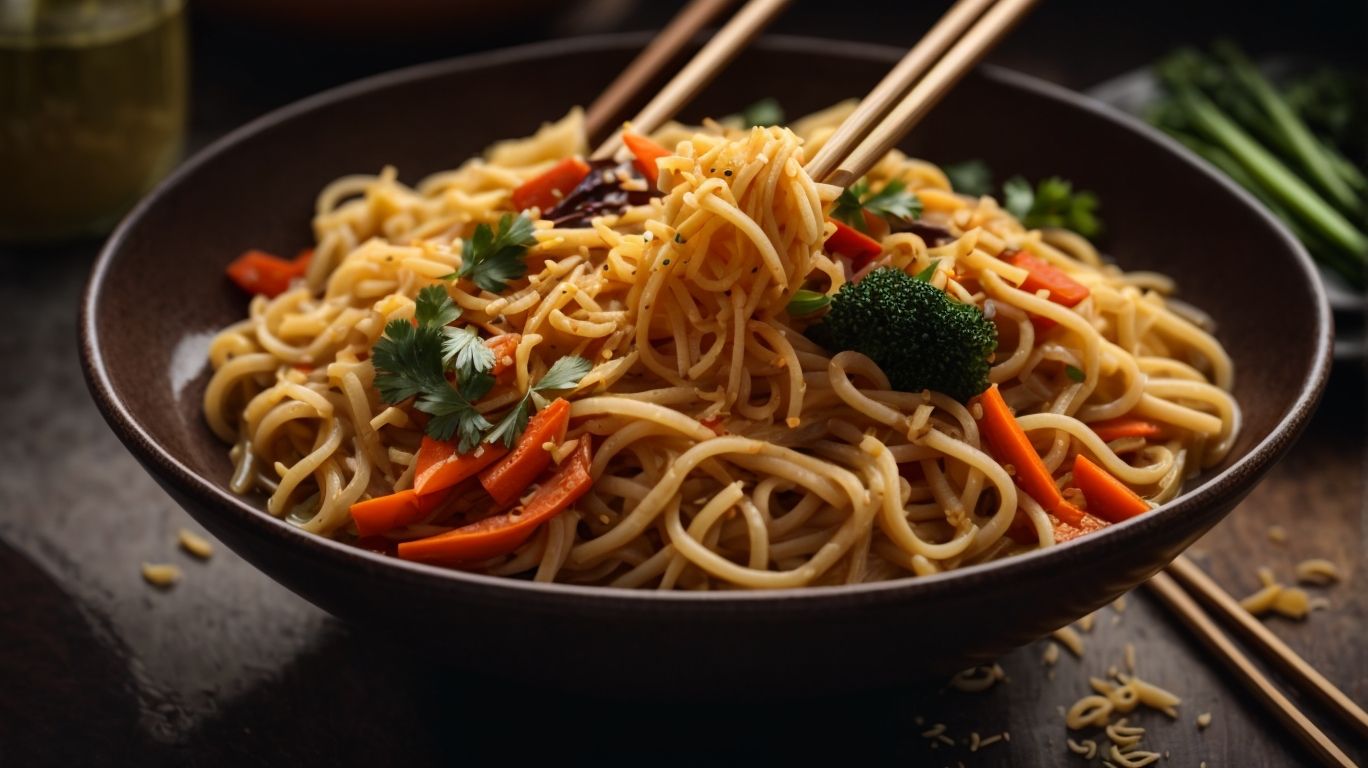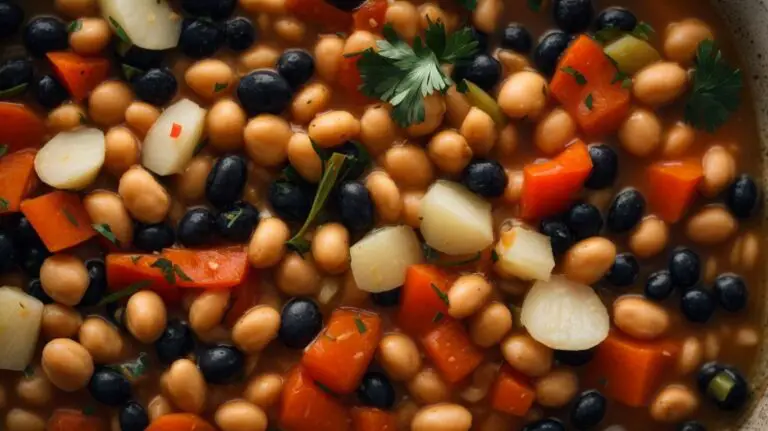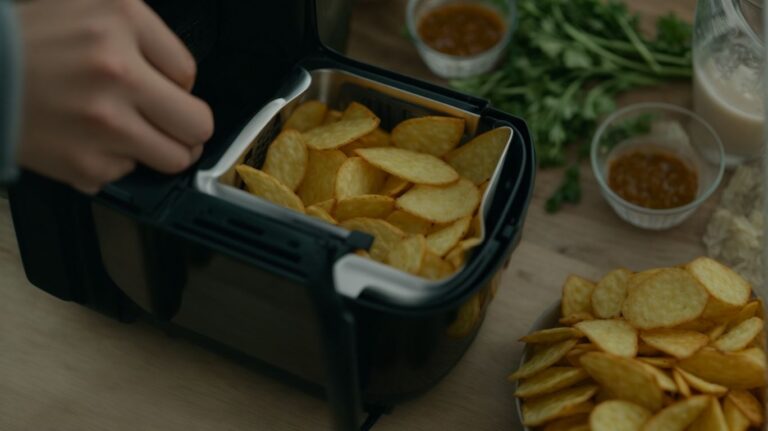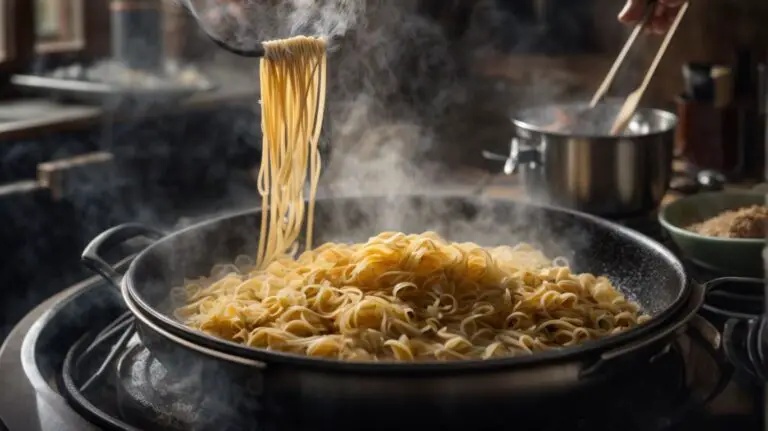How to Cook Noodles for Chow Mein?
Are you craving a delicious bowl of chow mein but not sure how to make it at home? Look no further!
We will walk you through the essential ingredients needed for a perfect chow mein recipe, including noodles, meat or protein, vegetables, and sauce. We will also guide you on how to prepare and cook the noodles, as well as how to prepare the other ingredients like meat, vegetables, and sauce.
Stay tuned for expert tips and tricks to ensure your chow mein turns out perfectly every time!
Key Takeaways:
What Ingredients Do You Need for Chow Mein?
To make delicious Chow Mein, you need a combination of key ingredients such as noodles, sauce, vegetables, and protein like chicken.
Starting with the noodles, traditionally Chow Mein is made with egg noodles which are cooked until they are slightly al dente to ensure the perfect texture. The sauce is a crucial element, usually consisting of a mixture of soy sauce, oyster sauce, sesame oil, and a hint of cornstarch to thicken it. For the vegetable component, popular choices include bell peppers, onions, carrots, and cabbage, adding vibrant colors and flavors to the dish. As for protein, apart from chicken, you can also use beef, shrimp, or tofu to suit different preferences.
Noodles
The choice of noodles is crucial for Chow Mein, with options ranging from traditional wheat noodles to the more delicate egg noodles, each offering a unique texture to the dish.
Wheat noodles, made primarily from wheat flour and water, are known for their chewy and firm texture. These noodles hold up well to high heat stir-frying, absorbing the flavors of the savory sauces and ingredients in Chow Mein.
On the other hand, egg noodles, enriched with egg yolks, have a softer and more tender mouthfeel. Their delicate nature allows them to soak up the sauce beautifully, creating a silkier finish to the dish.
The choice between wheat and egg noodles can significantly impact the overall taste and experience of your Chow Mein. While wheat noodles offer a satisfying chewiness, egg noodles bring a subtle richness to the dish. Knowing the characteristics of each type can help you tailor your Chow Mein to suit your preferences and create a harmonious blend of flavors and textures.
Meat or Protein
In terms of protein options for Chow Mein, chicken thigh is a popular choice due to its tenderness and ability to absorb the flavors of the stir-fry sauce.
Chicken thigh adds a rich and savory dimension to the dish, making it a favorite among those who enjoy a depth of flavor in their meals. To ensure the chicken thigh stays tender and juicy, it is essential to properly tenderize it before cooking. You can achieve this by gently pounding the thigh meat with a meat mallet or marinating it in a mixture of soy sauce, ginger, and garlic for at least 30 minutes.
Marinating the chicken thigh not only tenderizes the meat but also infuses it with additional layers of taste. The soy sauce adds umami richness, while the ginger and garlic provide a fragrant kick to the protein. For optimal flavor absorption, consider letting the chicken marinate in the refrigerator for a few hours or even overnight.
Vegetables
The inclusion of fresh vegetables in Chow Mein not only enhances the dish’s nutritional value but also adds vibrant colors and textures to the final presentation.
Vegetables like bell peppers, carrots, broccoli, and snow peas are popular choices for adding a burst of flavors and nutrients to the savory Chow Mein noodles.
To prevent the noodles from sticking together, it’s essential to ensure they are cooked al dente and then rinsed under cold water immediately to stop the cooking process.
For a creative twist, consider serving Chow Mein with a side of tangy pickled cucumbers or a refreshing Asian-style slaw featuring cabbage, sesame seeds, and a zesty dressing.
Sauce
The sauce is a defining element of Chow Mein, with variations in flavors and ingredients that can be customized to suit individual preferences.
One of the most crucial aspects of Chow Mein is the diversity in sauces that elevate the dish to unparalleled levels of deliciousness. From the savory oyster sauce to the slightly tangy hoisin sauce, each option brings a unique flavor profile to the dish.
Combining these sauces with a hint of Chinese cooking wine not only adds depth but also infuses a touch of authenticity that transports your taste buds to the bustling streets of China, where the dish originated.
Preparing the Noodles for Chow Mein
Properly preparing the noodles is essential for a successful Chow Mein dish, ensuring that they are cooked to perfection and coated evenly with the flavorful sauce.
Start by selecting the right type of noodles – typically, thin and long noodles like egg noodles or spaghetti work best for Chow Mein. Boil water in a large pot and add a generous amount of salt to enhance the flavor of the noodles.
Once the water comes to a rapid boil, gently add the noodles and stir occasionally to prevent clumping. After cooking the noodles to al dente, drain them and rinse with cold water to stop the cooking process and prevent them from sticking together.
Choosing the Right Noodles
Selecting the right noodles for Chow Mein can significantly impact the dish’s texture and overall flavor profile, with options such as Lo Mein and Ramen Noodles offering distinct characteristics.
Lo Mein noodles are soft and chewy, ideal for absorbing the savory flavors of the dish, while Ramen Noodles provide a firmer texture that holds up well in the stir-fry process. When choosing noodles for Chow Mein, consider factors such as thickness and shape, as thinner noodles like vermicelli can create a lighter dish, whereas wider noodles like udon offer a heartier bite.
For those seeking an authentic taste, using wheat-based noodles like Ho Fun can lend a traditional touch to the dish. Alternatively, rice noodles bring a lighter and more delicate flavor to the mix, perfect for those looking for a gluten-free option with a softer texture.
Preparing the Noodles for Cooking
Preparing the noodles correctly before cooking is key to achieving a well-balanced Chow Mein dish, whether it involves stir-frying rice noodles or utilizing pre-made Asian sauces for added convenience.
In terms of stir-frying rice noodles for Chow Mein, it’s essential to soak the noodles in hot water until they are pliable but still slightly firm. Drain and rinse them in cold water to stop the cooking process, preventing them from becoming too soft or mushy during stir-frying.
To enhance the flavors of the dish, consider using pre-made Asian sauces like oyster sauce, soy sauce, or hoisin sauce. These sauces add depth and complexity to the Chow Mein, elevating its taste profile with their savory, umami-rich notes.
Cooking the Noodles for Chow Mein
The cooking process for Chow Mein noodles involves precise stir-frying techniques to infuse them with the rich flavors of sesame oil, sugar, and cornstarch for an authentic taste.
Begin by preparing your ingredients – fresh veggies like bell peppers, carrots, and bean sprouts, along with your choice of protein such as chicken, beef, or tofu.
- Heat a wok or large skillet over high heat, then add sesame oil to impart its distinctive nutty flavor.
- Toss in your protein and cook until browned, then stir in the colorful veggies for a burst of freshness and crunch.
- Combine sugar and soy sauce for a sweet-savory glaze, while a cornstarch slurry will thicken the sauce to coat the noodles perfectly.
- Add the cooked noodles to the wok and stir-fry everything together until well combined and heated through.
Boiling the Noodles
Boiling the noodles before stir-frying is a crucial step in the Chow Mein preparation process, allowing them to achieve the desired texture and absorb the flavors of sesame oil and cornstarch effectively.
Properly boiled noodles not only provide a satisfyingly chewy texture but also contribute significantly to the overall taste of the dish. When noodles are boiled just right, they become more receptive to the flavors they are cooked with, such as the nutty aroma of sesame oil and the thickening effect of cornstarch. The boiling process softens the noodles, making them more pliable for absorbing the rich flavors of the sauces and seasonings used in Chow Mein.
Stir-frying the Noodles
Stir-frying the noodles in a hot pan with the flavorful sauce mixture, including soy sauce and sugar, is a key step in creating the signature taste and texture of Chow Mein.
When stir-frying the noodles for Chow Mein, it’s crucial to achieve the perfect balance of tender yet slightly crisp texture. To achieve this, you need to ensure that the pan is sufficiently hot before adding the noodles, allowing them to sear quickly and develop that desired slight char. The combination of soy sauce and sugar in the sauce mixture not only imparts a savory umami depth but also caramelizes beautifully during the high-heat cooking process, adding complexity to the dish.
Preparing the Other Ingredients for Chow Mein
Plus noodles, preparing the meat or protein, vegetables, and sauce components meticulously is crucial for a flavorful and well-balanced Chow Mein dish.
When choosing a protein for your Chow Mein, popular options like chicken, beef, shrimp, or tofu can be used to cater to various preferences. The protein should be marinated and sliced uniformly to ensure even cooking and distribution throughout the dish.
- As for vegetables, a colorful mix of bell peppers, carrots, celery, and onions can add both crunch and nutrients to the dish. It’s important to slice the vegetables consistently to promote even cooking and visual appeal.
- When preparing the sauce, the combination of soy sauce, oyster sauce, sesame oil, and other seasonings should be balanced to create a harmonious flavor profile.
Each element contributes to the overall taste and texture of the Chow Mein, making it essential to pay attention to detail in each component for a satisfying culinary experience.
Preparing the Meat or Protein
Before incorporating the protein into Chow Mein, marinating chicken thigh with tenderizing agents like Chinese cooking wine can enhance its flavor and tenderness when stir-fried.
Marinating the chicken thigh effectively involves a few key steps. Ensure to cut the chicken into uniform pieces to ensure even marination. Next, prepare a marinade comprising Chinese cooking wine, soy sauce, garlic, ginger, and a touch of sugar for a perfect balance of flavors.
Allow the chicken to soak in the marinade for at least 30 minutes; for more intense flavor, marinate it overnight in the refrigerator.
This process not only imparts a rich taste but also helps break down the muscle fibers, resulting in a more tender and succulent texture when cooked.
Preparing the Vegetables
Stir-frying a colorful array of fresh vegetables or utilizing convenient frozen vegetable mixes can add both visual appeal and nutritional value to the Chow Mein dish.
When preparing vegetables for Chow Mein, it is important to ensure they are cut into uniform shapes to promote even cooking and a harmonious blend of flavors. Common vegetables used in Chow Mein include bell peppers, carrots, onions, and cabbage, each adding distinct textures and tastes to the dish.
Stir-frying the vegetables in a hot wok with a bit of oil helps retain their crispness, vibrant colors, and essential nutrients. Adding Asian sauces like soy sauce, oyster sauce, or hoisin sauce not only elevates the flavor profile but also creates a delightful aroma that permeates the entire dish. Balancing the sweet, salty, and savory notes through the sauces harmonizes the overall taste of Chow Mein.
Making the Sauce
Crafting a flavorful sauce for Chow Mein involves a delicate balance of ingredients like soy sauce, oyster sauce, sugar, and cornstarch to achieve the desired taste and consistency.
To start creating this signature sauce, one must first combine the soy sauce, oyster sauce, and a hint of sugar in a bowl. These ingredients provide the salty and umami base that is essential for the complex flavor profile of authentic Chow Mein. The addition of cornstarch, a common thickening agent in Chinese cuisine, gives the sauce its velvety texture. It is crucial to whisk these ingredients thoroughly to ensure a smooth and homogenous mixture.
Cooking the Chow Mein
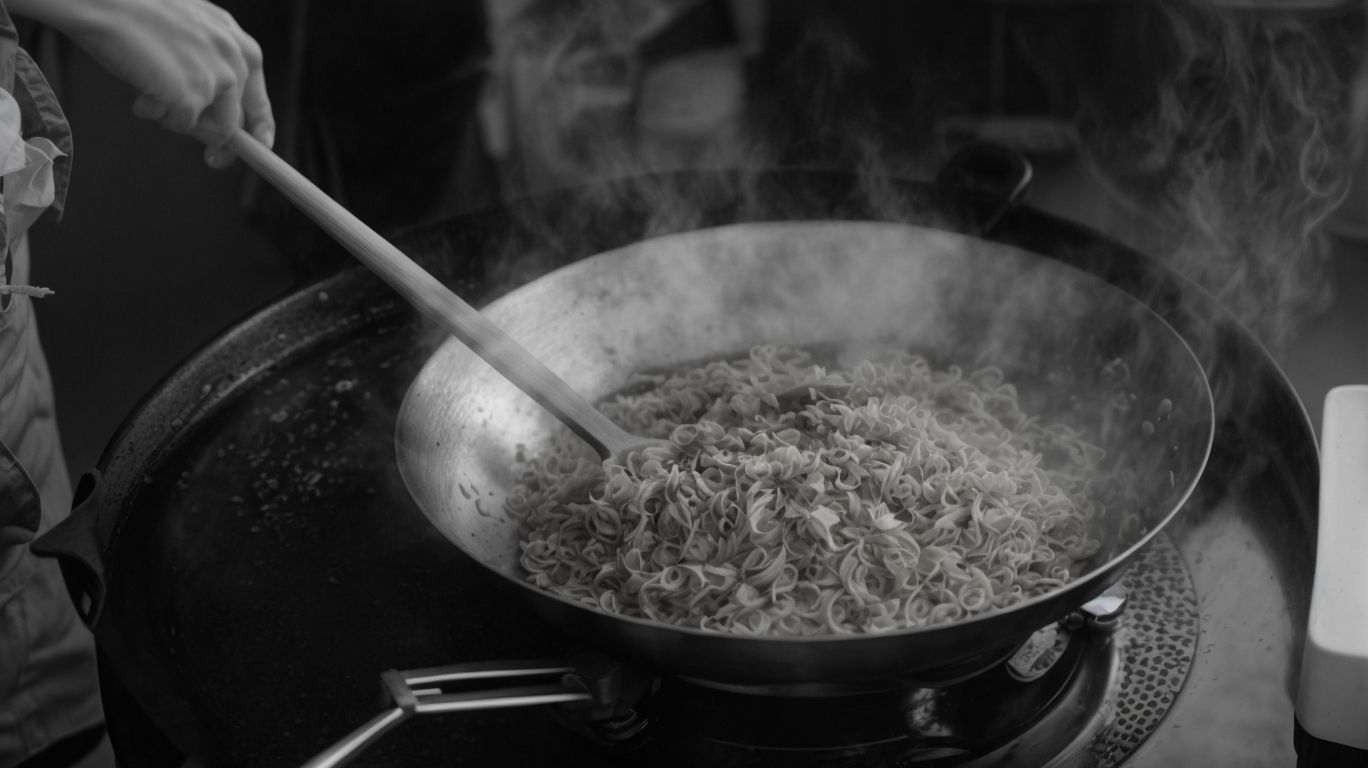
Credits: Poormet.Com – William Thomas
The art of stir-frying the meat or protein, vegetables, and noodles together with the flavorful sauce is the final step in bringing all the components together to create a delectable Chow Mein dish.
Ensure you have prepped and sliced all your ingredients beforehand as stir-frying is a quick cooking method.
- Heat your wok or large skillet over high heat until it starts to smoke slightly, adding a small amount of cooking oil.
- Start by stir-frying the marinated meat until browned and then remove it from the pan.
- Add in your vegetables, such as bell peppers, bok choy, and mushrooms, stirring constantly to maintain their crunch.
- Toss in the cooked noodles and the meat, pouring over the Chow Mein sauce made of soy sauce, oyster sauce, and sesame oil.
Continue to stir-fry all the ingredients together until everything is evenly coated and heated through, ensuring the noodles are well-incorporated with the sauce.
Stir-frying the Meat or Protein
Stir-frying the marinated meat or protein, whether it’s succulent chicken thigh or flavorful Kung Pao Shrimp, sets the foundation for a satisfying and protein-rich Chow Mein dish.
When preparing chicken thigh, ensure you slice it thinly against the grain to enhance tenderness and allow for quick cooking.
For Kung Pao Shrimp, devein and remove the shells for a cleaner eating experience.
To achieve optimal flavor, marinate the meat with a mix of soy sauce, garlic, and ginger before cooking.
The heat of the wok, combined with the right amount of oil, guarantees a crispy exterior while keeping the meat juicy.
Stir-frying the Vegetables
Stir-frying a medley of vegetables, whether fresh or frozen, in the aromatic Asian sauces infuses the Chow Mein dish with a burst of flavors and textures, enhancing its overall appeal.
When stir-frying, it’s crucial to maintain high heat to achieve that perfect balance of crispiness and tenderness in the vegetables. Each vegetable has a different cooking time, so it’s essential to start with those that take longer, like carrots or broccoli, before moving on to quicker-cooking options such as bell peppers or bean sprouts.
The sizzle of the pan as the vegetables hit the heat, the vibrant colors blending together, and the enticing aroma that fills the kitchen all add to the allure of the dish.
Adding the Noodles and Sauce
Combining the cooked noodles with the flavorful Chow Mein sauce, enriched with soy sauce and oyster sauce, completes the final step of assembling a harmonious blend of flavors in the dish.
The addition of soy sauce brings a savory depth to the sauce, while the oyster sauce adds a hint of umami richness, creating a tantalizing combination. These two key ingredients work together to elevate the overall taste profile of the Chow Mein, striking a delicate balance between saltiness and sweetness.
Tips and Tricks for Perfect Chow Mein
Achieving the perfect Chow Mein requires mastering key techniques like using high heat, avoiding overcrowding the pan, and garnishing with fresh green onions and toasted sesame seeds.
Properly preparing the vegetables is crucial for a successful dish. Slice them thinly and uniformly to ensure even cooking. Blanching or stir-frying the protein separately before combining it with other ingredients helps maintain their textures and flavors.
- When stir-frying, remember to continuously toss the ingredients to prevent sticking and burning. This also ensures that all elements are cooked evenly.
- Experiment with various sauces to find your preferred flavor profile; try oyster sauce, soy sauce, or hoisin sauce for unique tastes.
Use High Heat
Employing high heat during the stir-frying process is essential to achieve the characteristic sear and caramelization that impart depth of flavor to the Chow Mein dish, especially when using ingredients like sesame oil and sugar.
When the wok is preheated to a smoking point and ingredients are constantly tossed in this intense heat, the Maillard reaction occurs, creating a savory umami taste in the dish.
The rapid cooking time ensures that the vegetables retain their vibrant colors and crisp textures, adding a delightful crunch to each bite.
Some cooks might choose to add a dash of sugar to balance the flavors, enhancing the overall taste profile of the Chow Mein.
Don’t Overcrowd the Pan
Avoiding overcrowding the pan while stir-frying ensures that the vegetables and protein components cook evenly and retain their distinct textures and flavors, contributing to a well-balanced Chow Mein dish.
When the pan is overcrowded, the ingredients tend to steam rather than sear, resulting in a lackluster appearance and taste. Proper spacing allows for moisture to evaporate quickly, creating a desirable mix of crispiness and tenderness in the dish.
Overcrowding can lead to a drop in pan temperature, causing the ingredients to release more water, resulting in a soggy Chow Mein. To prevent this, keep the ingredients in a single layer, leaving ample space between each piece.
Add Sauce Gradually
Gradually incorporating the prepared sauce into the stir-fry allows for better control over flavor distribution and ensures that the Chow Mein dish achieves a harmonious balance of savory notes from ingredients like soy sauce and oyster sauce.
When stir-frying Chow Mein, the technique of adding sauce gradually is crucial to infuse the noodles and vegetables with a depth of flavor. By drizzling the soy sauce and oyster sauce in increments, you give them time to meld with the other ingredients, enhancing the overall taste profile of the dish.
This method not only elevates the taste experience but also prevents overwhelming any single element with an intense burst of seasoning. It’s like creating a symphony of flavors, each ingredient playing its part in perfect harmony.
Garnish with Green Onions and Sesame Seeds
The final touch of garnishing Chow Mein with fresh green onions and toasted sesame seeds not only adds visual appeal but also contributes a burst of freshness and nuttiness to the overall dish.
Green onions, also known as spring onions or scallions, bring a vibrant pop of color to the Chow Mein, elevating its aesthetic presentation. The bright green hue of the onions contrasts beautifully with the golden noodles and assorted vegetables, making the dish visually appealing.
On the other hand, the addition of toasted sesame seeds not only provides a delightful crunch but also imparts a rich, nutty flavor that complements the savory notes of the dish. These tiny seeds add depth and complexity to the Chow Mein, creating a harmonious balance of textures and tastes.
Frequently Asked Questions
1. How to Cook Noodles for Chow Mein?
To cook noodles for chow mein, start by boiling a pot of water. Once the water is boiling, add the noodles and cook for about 2-3 minutes until they are soft but still slightly firm. Drain the noodles and rinse with cold water to prevent them from sticking together.
2. Can I use any type of noodles for chow mein?
Traditionally, chow mein is made with thin, wheat-based egg noodles. However, you can use other types of noodles such as rice noodles or even spaghetti if that’s what you have on hand. Just make sure to adjust the cooking time accordingly.
3. How do I prevent my noodles from becoming mushy?
To prevent your noodles from becoming mushy, avoid overcooking them. Follow the cooking instructions and keep an eye on the noodles while they are boiling. Additionally, make sure to rinse the noodles with cold water after cooking to stop the cooking process.
4. Can I cook the noodles ahead of time for chow mein?
Yes, you can cook the noodles ahead of time for chow mein. Just make sure to rinse them with cold water after cooking and toss them with a bit of oil to prevent them from sticking together. When ready to use, simply reheat the noodles in a pan with your desired sauce and toppings.
5. What’s the best way to cook noodles for stir-fried chow mein?
For stir-fried chow mein, it’s best to use fresh noodles instead of dried ones. Fresh noodles tend to have a better texture and won’t become mushy when stir-fried. You can find fresh noodles at Asian markets or make your own at home.
6. How can I add more flavor to my noodles for chow mein?
To add more flavor to your noodles for chow mein, try boiling them in broth instead of water. You can also add some soy sauce or other seasonings to the cooking water for extra flavor. Additionally, make sure to mix the noodles with your desired sauce and toppings before serving for maximum flavor.

